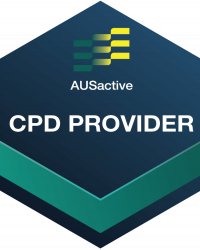Wunda Chair Repertoire
Warm Up:
Kneeling Mermaid
Alternate Names
Kneeling Side Reach
Derived From
Mat Pilates: Mermaid or Side Reach
Primary Element
Warm Up
To continue to warm up the body in the frontal plane, lengthen the spine and improve hip stability.
Secondary Element
Mobility
To create length and movement in the spine in the frontal plane.
Tertiary Element
Stability
To develop and improve pelvis stability with the challenge of lateral flexion through the torso.
Repetitions
6-8 each side
Apparatus Setup
Suggested springs
- Exo Chair by Balanced Body
- Cactus style number system
- one spring on setting 1
- Resistance: light
Scan the apparatus once the client is moving for the correct set up
- The pedal position, checking the dowel is secure if working on a split pedal Wunda Chair
- The springs are secure and set to the intended resistance
Plane of Motion
Frontal
Targeted Muscles
To create, develop and connect with the pelvis stabilisation muscles the focus is gluteus medius and gluteus maximus and the deep abdominal muscles transversus abdominis.
When working in the lateral flexion component of the exercise the abdominal internal and external obliques (or the waist muscles) are where the work is coming from.
Warnings
Not suitable for some knee and spinal injuries or issues where loading on the knees in a high kneeling position, or side flexion is contraindicated or would cause pain.
Execution
Kneel side on to the Wunda Chair and place the inside hand on the pedal just forward of the shoulder. Reach the outside arm up towards the ceiling. Keep the knees evenly pressing into the floor, shoulders stacked over the hips and hips stacked over the knees with the tailbone reaching long or a posterior pelvic tilt.
Press the pedal down by laterally flexing the torso towards the Wunda Chair, lifting the body “up and over” to engage the abdominal obliques. Lift the waist up as the pedal moves down towards the base, turning the head towads the pedal to release the neck.
Reach through the pedal arm and legs and lift from the waist or toso to return to the start position.
Observations
Do a body scan of the client taking note of the following points
- Pelvis
- Are the hip bones even horizontally or is the client leaning to one side?
- Are the hips positioned over the knees? It is likely the pelvis will shift outwards away from the pedal as the torso flexes over. The challenge is to keep the hips over the knees the whole time
- Shoulder
- Is the shoulder internally rotated and the waist collapsing? Move the pedal hand forward to a comfortable position on the pedal so the shoulder sits as neutral as possible before beginning the movement
Learning Style Technique Cues
Auditory – word associations that connect mind and body
- Focus on the length in your waist and keep your hips over the knees
- The torso flexing to the side is what move the pedal, the hand just happens to be in contact with it
- Say the client’s name when you’re about to interact with them
Visual
- Imagine the pivot point being your belly button and you’re turning a dial to flex the torso over to the side and back again
- You may demonstrate a part of the movement as a visual representation for the client to see
Kinaesthetic
- Keep even weight or pressure under both knees
- Lift the ribcage, then the shoulder, then the hand towards the ceiling before flexing the torso over, and feeling the pedal move down as a result of that torso flexion
- Reach down through the pedal arm and keep the knees pressing into the floor as you lift up from the pivot point of belly button on the return phase of the movement
Modifications and Variations
Regression Repertoire to work on:
Progress the exercise by reviewing
- focus on the work coming from the abdominal obliques not the shoulder.
Progression Repertoire to work towards:
Series and Transitions
Tuck the toes and ‘levitate up’ or lift back to standing from the high kneeling position without using the hands. Turn around and repeat on the second side. Finish the second side standing after ‘levitating up’ a second time.

